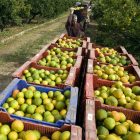Investigations
Et skrantende Falck skabte sikrings-giganten G4S – hvorefter danskerne forsvandt og firmaet blev et monster
|
To danske erhvervsfolk, Lars Nørby Johansen og Jørgen Philip-Sørensen, var hovedkræfterne bag den storstilede oprettelse af verdens største sikringsfirma, G4S, i 2004. Men blot et år efter forsvandt begge fra selskabet på meget uklar vis. G4S roser stadig sig selv for sine danske rødder, men rundt om i verden er giganten i dag anklaget for drab, tortur, overvågning og andre overtrædelse af menneskerettigheder, som man ikke forbinder med Danmark og dansk erhvervsliv, og som har fået danske og norske investorer til at trække sig. Oprettelsen af G4S skete efter et ultra-hæsblæsende forløb med de to meget forskellige mænd i spidsen.
Lars Nørby Johansen opfattes i Danmark som en af bannerførerne for moderne ledelse, corporate governance, og har givet navn til et udvalg om virksomhedsledelse, Nørby-udvalget, der kom med sine anbefalinger i 2001. Han stod i spidsen for Falck i en lang række af opkøb og aktie-udvekslinger frem til etableringen af G4S, og han blev på det tidspunkt vurderet som en af de allermest indflydelsesrige erhvervsfolk i Danmark.


